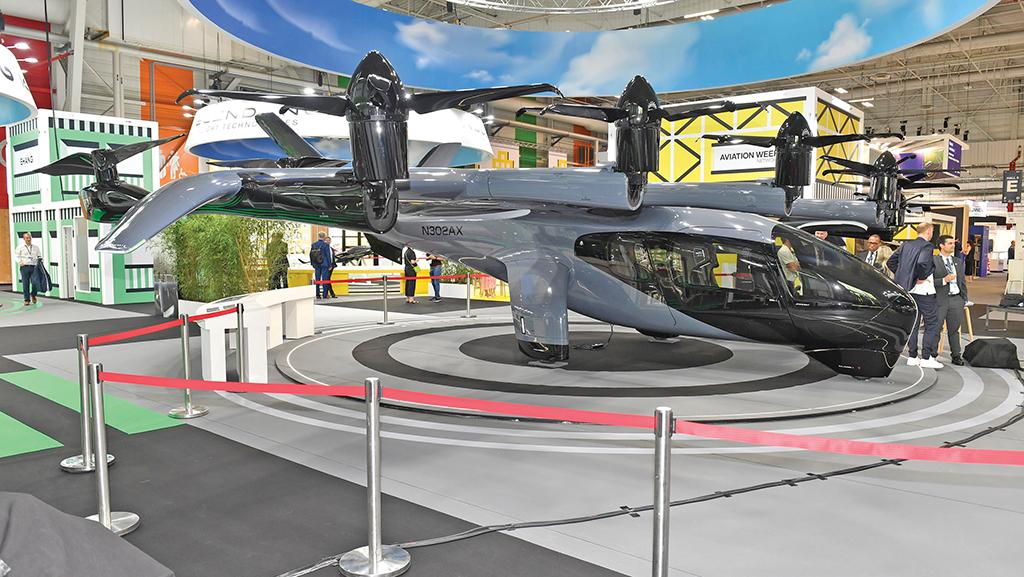
Audience interest in the slate of advanced air mobility prototypes unveiled at the 2023 Paris Air Show made clear that the sector has reached a breakthrough moment.
But preparing for this new mode of air travel—which cannot rely entirely on legacy industry technologies, processes, training, certifications or infrastructure—involves inherent difficulties, according to a government accountability report published last year. Bridging that gap was the focus of an Aviation Week panel at the air show. It was an honor to join panelists from CAE, the Vertical Flight Society, Archer, Volocopter and the Aerospace Industries Association. My role was to share the aviation education perspective.
From that vantage point, Embry-Riddle Aeronautical University faculty are in constant discussion about the ways in which advanced air mobility (AAM) is ushering in a new era in flight, one that requires reconsideration of engineering, operations, maintenance, the global airspace system and other core components of aviation. Among the voices in this discussion are leading electric vertical-takeoff-and-landing aircraft manufacturers, industry advisory board members and academics.
Embry-Riddle’s Unmanned Aircraft Systems (UAS) degree programs offer coursework that introduces AAM concepts, including infrastructure development, such as vertiports and modifications to the airspace to accommodate these systems. A suite of courses in AAM is under development and will constitute a minor course of study for students wanting to pursue this field.
As venture capital and research and development are directed toward building and certifying the first generation of these new aircraft, engineering programs are adapting. For example, Embry-Riddle’s Eagle Flight Research Center draws students from diverse disciplines—electrical, aerospace and mechanical engineering—to develop electrified and hybrid-propulsion aircraft. We have also introduced a course for engineers on the fundamentals of electrified propulsion, battery technology and variable-pitch rotors.
And thanks to a $1.4 million grant from NASA, researchers with Embry-Riddle, Boston University, Virginia Tech, Tuskegee University and Joby Aviation are studying how air taxis can take off and land quietly at vertiports in dense urban environments where winds are unpredictable.
Air traffic management is another main operational concern. Our students recently used sophisticated virtual simulators at the air traffic control (ATC) laboratory at our Prescott, Arizona, campus to test Reliable Robotics’ new communication system for remotely piloted, highly autonomous aircraft. Chad Healy, senior human factors engineer at Reliable Robotics, which specializes in safety-enhancing aircraft automation systems, said that having access to highly trained students and a robust ATC simulation environment is providing valuable data “that will help us refine our system.”
Thanks in part to FAA regulation changes, aviation maintenance programs are providing more relevant coursework and higher-level training for the complex designs, electronics, avionics, communication and navigation systems in aircraft today. This positive trend has opened the door for maintenance programs to include AAM subject matter such as electricity and composite structures.
Stephen Ley, associate professor in the School of Aviation Sciences at Utah Valley University, and Zackary Nicklin, UAS program manager at Northland Community and Technical College in Minnesota, recently told Aviation Week that they are collaborating on EVPro+ training at their institutions (Inside MRO July, p. MRO13).
Preparing pilots for AAM aircraft—which often employ vertical and horizontal flight modes and different flight controls—is a significant hurdle, and training standards are just beginning to be defined. In June, the FAA proposed a comprehensive rule for certifying pilots of powered-lift aircraft.
Companies are developing training for their proprietary AAM aircraft, but aviation schools will be critical to developing a training pipeline for pilots skilled in the control logic and autonomous systems used in AAM. Our experience with augmented reality, virtual reality and simulation will also prove helpful in validating training methods.
These new aircraft will collect vast amounts of flight data. Leveraging this data and conducting predictive analysis will be critical to providing a safe way for them to enter an already congested airspace.
Though AAM aircraft will use increasing levels of automation, cockpit skills will still be crucial as this new aviation environment emerges. Broadly known as “headwork,” these skills include situational awareness, decision-making, teamwork, communication, anticipation and continuous learning. When AAM enters the airspace, unexpected hazards are likely to arise, and strong headwork will be needed to mitigate them.
As rulemaking and certification continue to advance, and industry rolls out its innovative and exciting prototypes for AAM, one goal must remain above all: safety.





